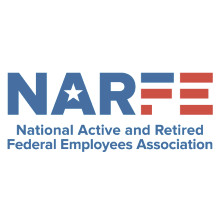SEA Releases Infographic: Myths & Realities: Pay Overlap Between Senior Executives and General Schedule Managerial EmployeesSEA has released the first in a series of infographics illustrating the growing pay overlap among the federal government’s managerial and executive corps. Washington, D.C. As the ongoing debate over federal salaries and awards continues, it has become increasingly apparent that there is little understanding, and often some misunderstanding, of the various federal pay systems, especially that governing the Senior Executive Service (SES). Further, some misinformation is being used to underpin calls for change. In order to set the record straight, the Senior Executives Association (SEA) is getting back to basics, starting with SES pay, through a series of infographics aimed at illustrating how the system really works. Click here to view infographic For over a decade, SEA has sounded alarms about the growing pay overlap among the federal government's managerial and executive corps. This overlap presents an impediment to attracting top level talent into the government's career executive corps. As of 2012, approximately 25% of Senior Executives earned below $160,000, a salary level below that of some senior managers under the General Schedule (GS-14s and 15s), including former National Security Personnel System (NSPS) employees. Statutory changes approved by Congress have allowed pay compression to exacerbate, as General Schedule employees continue to receive locality pay in addition to other market based adjustments, whereas Senior Executives do not receive these adjustments. To demonstrate, SEA has developed the attached infographic depicting pay overlap and the effect on salary of the SES pay cap implemented in 2004. Additionally, the figures of federal government managers and Senior Executives are juxtaposed with the federal contractor executive salary cap, which is set to rise to $950,000 this year. This contractor executive cap is benchmarked against compensation figures for large private sector companies with over $50 million in annual sales. With nearly 70% of Senior Executives managing programs with budgets in excess of $50 million, SEA believes that it is time that Congress address the two-fold pay disparity which discourages managers from entering the executive corps for financial purposes, among other reasons, while also incentivizing the federal government's top executives to take their talents, skills, and knowledge of government operations to private industry where they can earn in excess of five times their federal salaries. The Senior Executives Association (SEA) is a professional association representing Senior Executive Service members and other career federal executives. Founded in 1980, SEA's goals are: to improve the efficiency, effectiveness and productivity of the federal government; to advance the professionalism and advocate the interests of career federal executives; and to enhance public recognition of their contributions. The SEA Professional Development League (PDL) is a nonprofit educational organization committed to advancing the professionalism of career federal executives through the sponsorship of training, recognition, and research activities. |













